► All the info on the latest MX-5
► 2.0-litre 181bhp engine top choice
► 1.5-litre 130hp model still fun
The mk4 Mazda MX-5 – officially known as the Mazda MX-5 ND – has proven a superb return to form for the world’s most popular roadster. An extreme attention to lightweight detail has delivered a low-slung, low-mass machine that ticks the low-cost fun box like no other car on sale. Better yet, the introduction of a higher-revving 2.0-litre engine in 2019 means it’s also finally, sort of, reasonably quick. For an MX-5.
There are two versions, the regular soft-top and the targa-style hard-top RF – though this review focuses on the former. Sticking with this, the model line up for the 2022 MX-5 convertible is pretty simple: two engines, each with a choice of two trim levels – making four different variants of the car.
Whichever you go for, affordable fun remains its major attraction, though the infotainment and safety tech has moved on a bit as well.
CAR’s Sports Car Giant Test
Wasn’t there a mid-life facelift or something?
Facelift, no. Update, yes. In 2019, the firm not only improved the 2.0-litre Skyactiv-G engine, it also added some new features – including the radical concept of reach-adjustable steering. This wasn’t fitted at original launch in 2015 due to concerns about weight, but the solution adopted apparently weighs no more than the original fixed column.
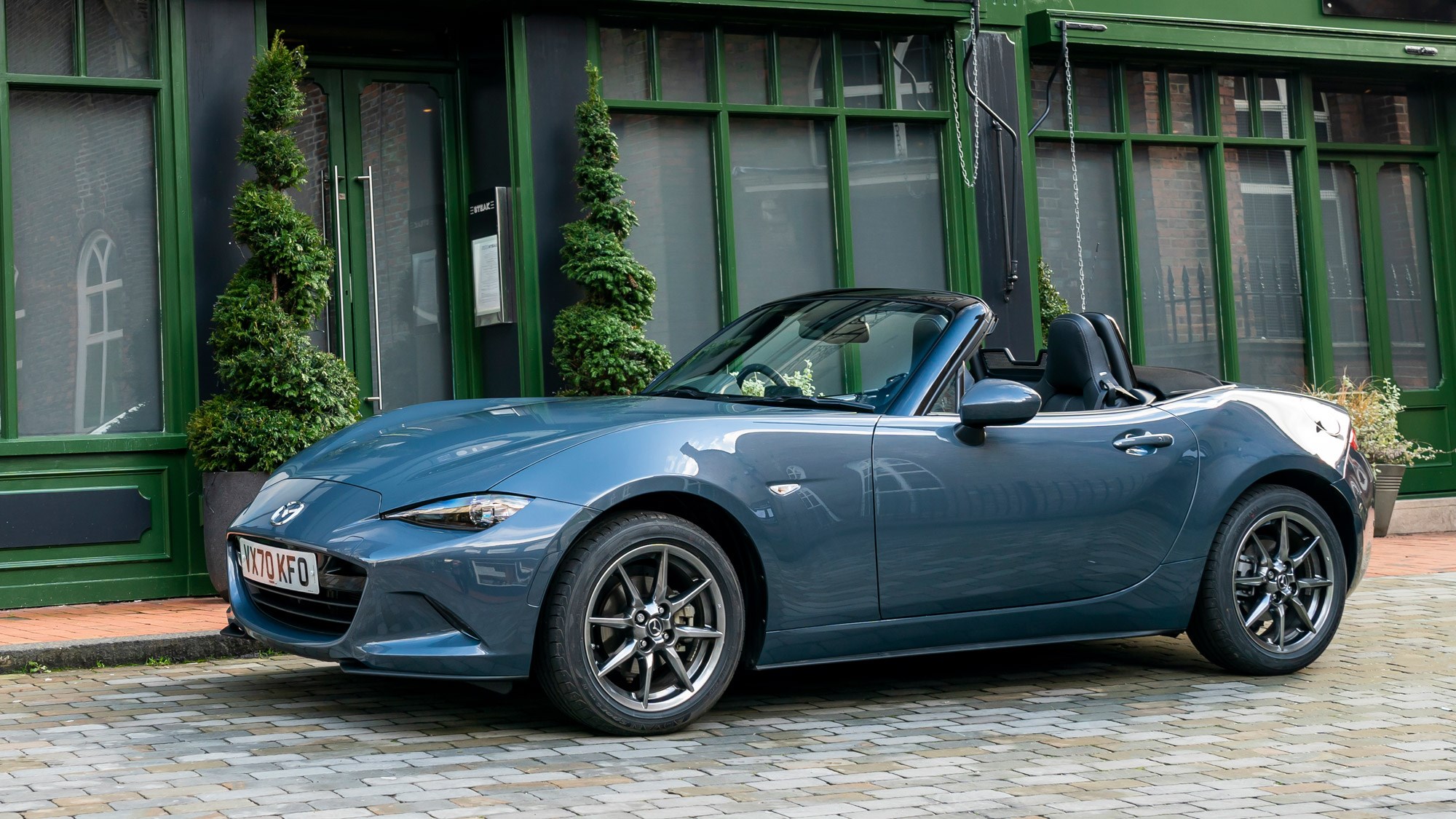
There was a further set of revisions in 2021, but these made no engineering alterations.
What’s the difference between the 2.0-litre engines?
The later 2.0-litre models receive lighter pistons and con-rods, a stiffer crankshaft, and revisions to camshafts, valves, ports, piston rings, fuel injection, throttle body, air intake and exhaust – plus a new dual-mass flywheel. As a result they redline at 7500rpm rather than 6800, and produce 181bhp instead of 158bhp.
This is enough to knock the soft-top version’s 0-62mph time down to 6.5 seconds – 0.8sec less than before. More significantly in MX-5 terms, it makes the bigger engine just as zingy and fun as the smaller 1.5-litre engine, which was previously the pick of the range thanks to a level of charisma that overcompensated for its paultry 130bhp.
What’s the 181bhp Mazda MX-5 like to drive?
Compared with even the previous 158bhp model, the 181bhp 2.0 has a noticeably useful amount of extra shove. Especially in the higher reaches of the rev range, where the limit isn’t just extended but accompanied by substantially more torque. For although peak muscle only went up from 148lb ft to 151lb ft, the curve falls away much less suddenly towards the redline than it did before.
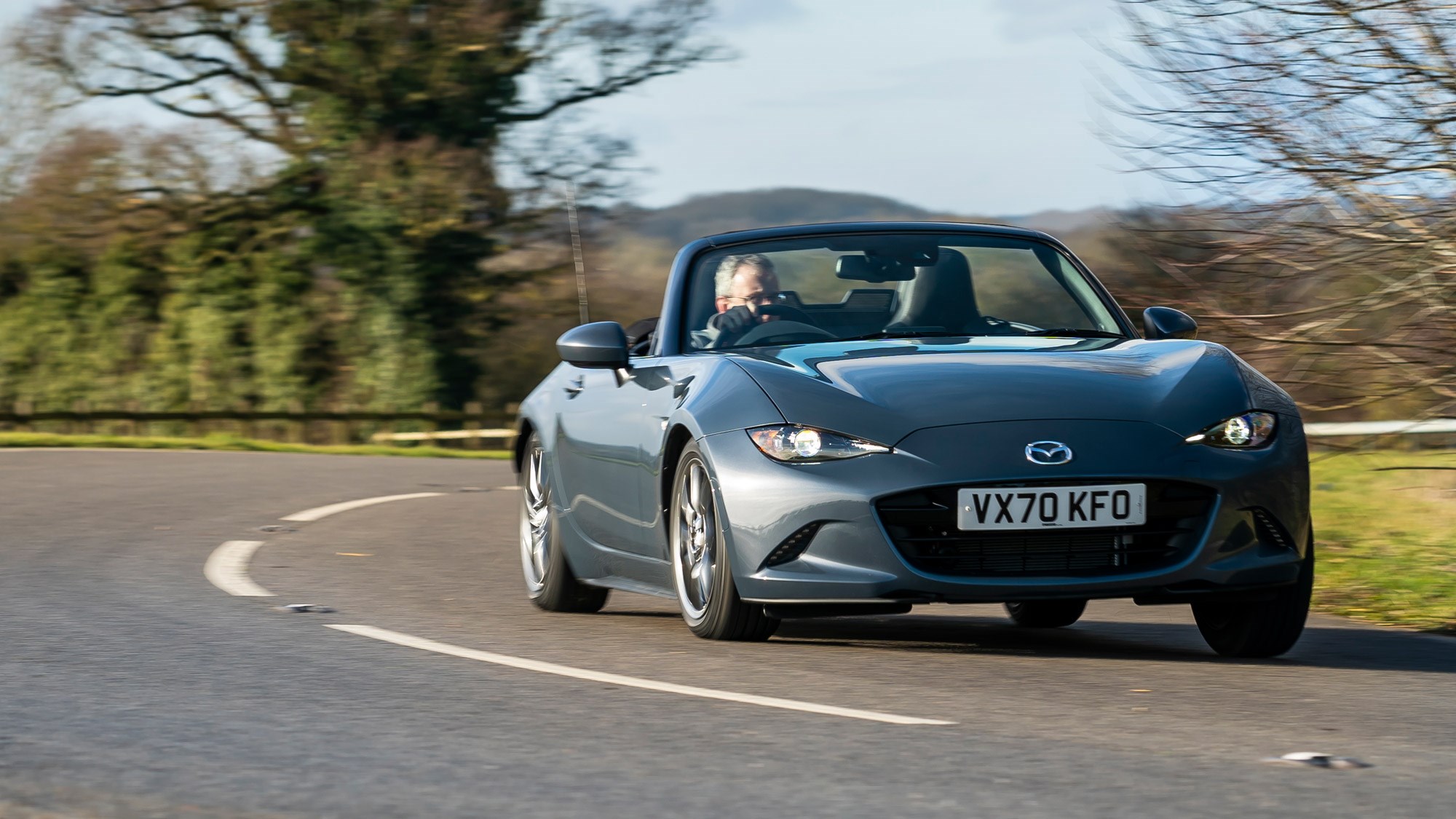
Chassis-wise, this is a super-compact, lightweight sports car that refuses to shy away from rear-wheel drive dynamics. Take liberties without care and you may find yourself praising the gods of electronic stability control, as the transition from bodyroll to oversteer can be rather abrupt – particularly on the softer standard suspension.
But once you click with it, this very adjustability makes it engaging and superbly nimble, and means it doesn’t really drive like anything else a mainstream manufacturer has on sale.
The engine is buoyed along by a taut, precise, wrist-flick of a six-speed manual gearbox action – and no soft-top is available with the automatic transmission offered on some versions of the RF. On roads you know, you can make this car really dance. A limited slip differential continues to be fitted as standard on all 2.0-litre models.
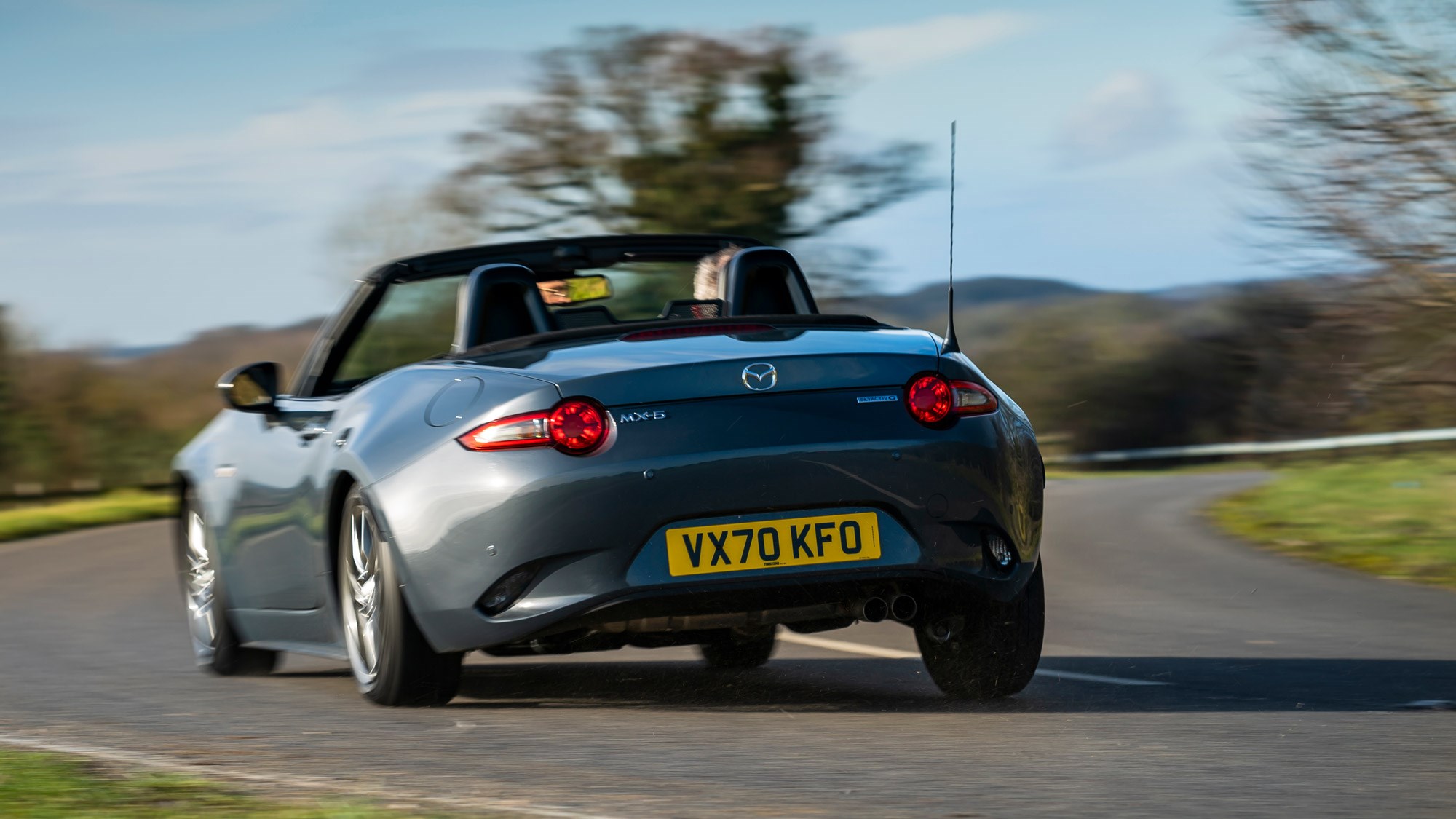
Not content with that, Mazda equips any 2.0 with Sport in the title (which is all of them now) with uprated Bilstein suspension and a front strut brace. If you’re buying an MX-5 to simply potter, you may want to think twice about this, as the resulting ride is rather firm – to the extent that passengers may find it difficult to tolerate.
As the driver, you won’t mind that so much, as the Billies also deliver much tighter body control – the car leans less in corners allowing you to lean more on the engine, and you’ll make faster progress as a result. Though perhaps without the satisfaction you get from learning to tame the slightly wayward rear-end of the regular setup.
What about the 1.5-litre MX-5?
While the 1.5-litre Skyactiv-G only gained 1bhp and 1lb ft as part of the mid-life update process – taking totals to 130bhp and 112lb ft – beneath the surface this actually benefitted from new high-pressure multi-stage injectors, the same ‘edge-cut’ piston design and the same new asymmetrical piston rings for reduced friction. As with the 2.0-litre, there were additional vibration control measures added, too.
It’s substantially slower (0-62mph in 8.3sec) but for many of us here, the joy of the MX-5 isn’t in outright speed, it’s in wringing its neck – so the smaller engine retains plenty of fans.
It also comes on smaller wheels – 16-inch rather than 17-inch alloys – which further refines the ride by virtue of reduced unsprung mass and larger sidewalls. Works well on a b-road, at the expense of a smidge of ultimate precision.
Worth noting that there are no Bilstein or LSD options for the 1.5.
Talk us through the trim levels
There are currently four regular versions of the MX-5 roadster: SE-L, Sport, Sport Tech and Sport Tech GT. The first two come with the 1.5-litre engine, the second are 2.0-litre models. Whichever you go for, standard equipment is generous.
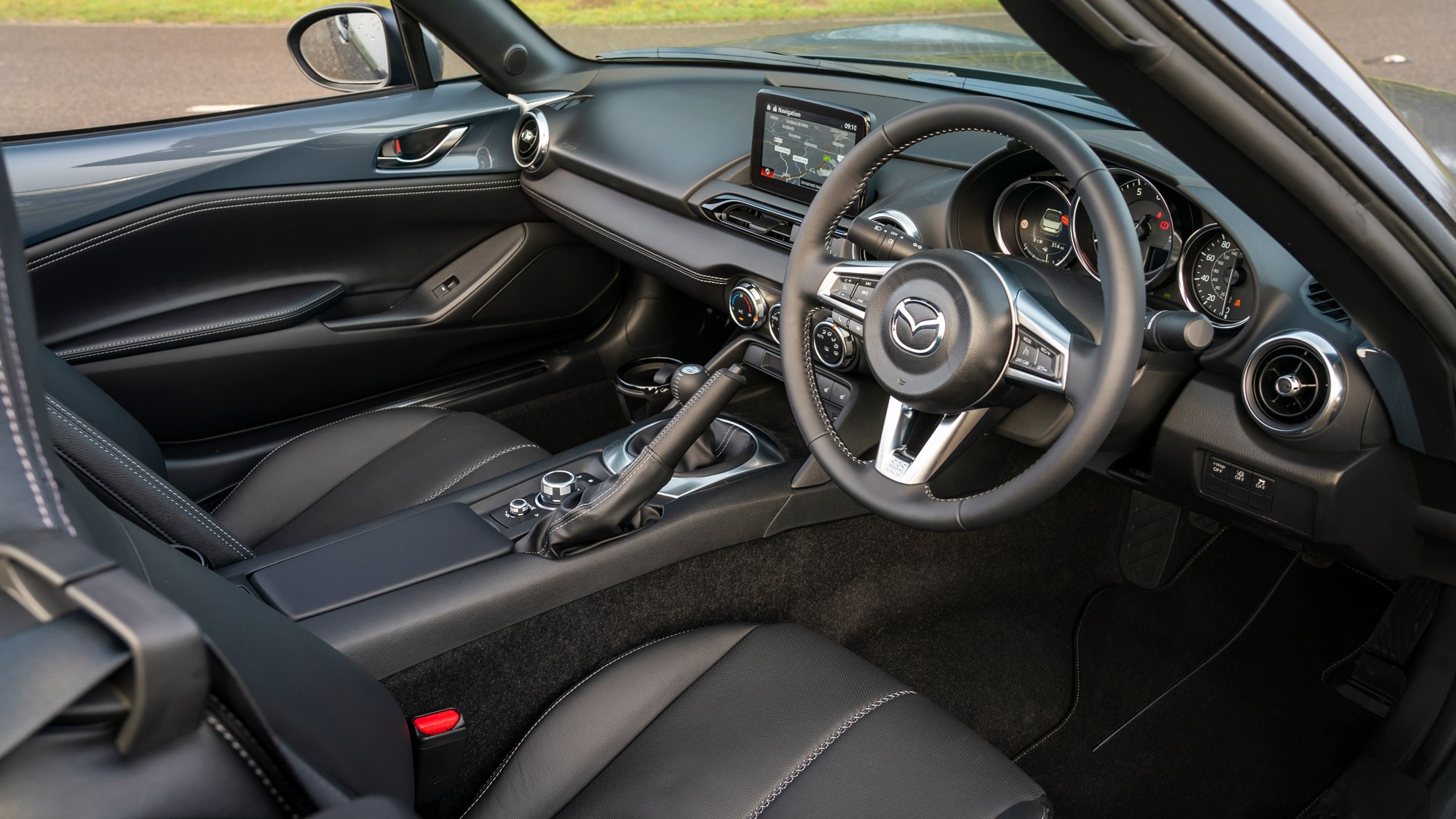
For example, even the entry-level SE-L comes with the full Mazda Connect infotainment system, which includes a 7.0-inch screen, sat-nav, DAB, Bluetooth, wireless Apple CarPlay and wired Android Auto. This system takes a kind of iDrive-lite approach – being controlled by a ‘Multimedia Commander’ puck mounted to the centre console, easy to navigate and quietly powerful. It’s very in keeping with the no-nonsense approach of the rest of the car.
Similarly, all models get LED headlights, heated seats, climate control, cruise control and alarm – but the SE-L is your only choice if you don’t want leather seats, being fitted with a ‘premium’ cloth instead.
Upgrade to Sport and you get body-coloured door mirrors and silver alloy wheels (both in place of the black), automatic lights and wipers, parking sensors, Bose hi-fi and bunch of extra safety equipment, including AEB.
The differences with the Sport Tech model we’ve mostly already covered – as a 2.0-litre model it gets 17s, Bilsteins, slippy diff and strut brace – but further points of note are the included blindspot monitors with rear cross-traffic alert and the reversing camera.
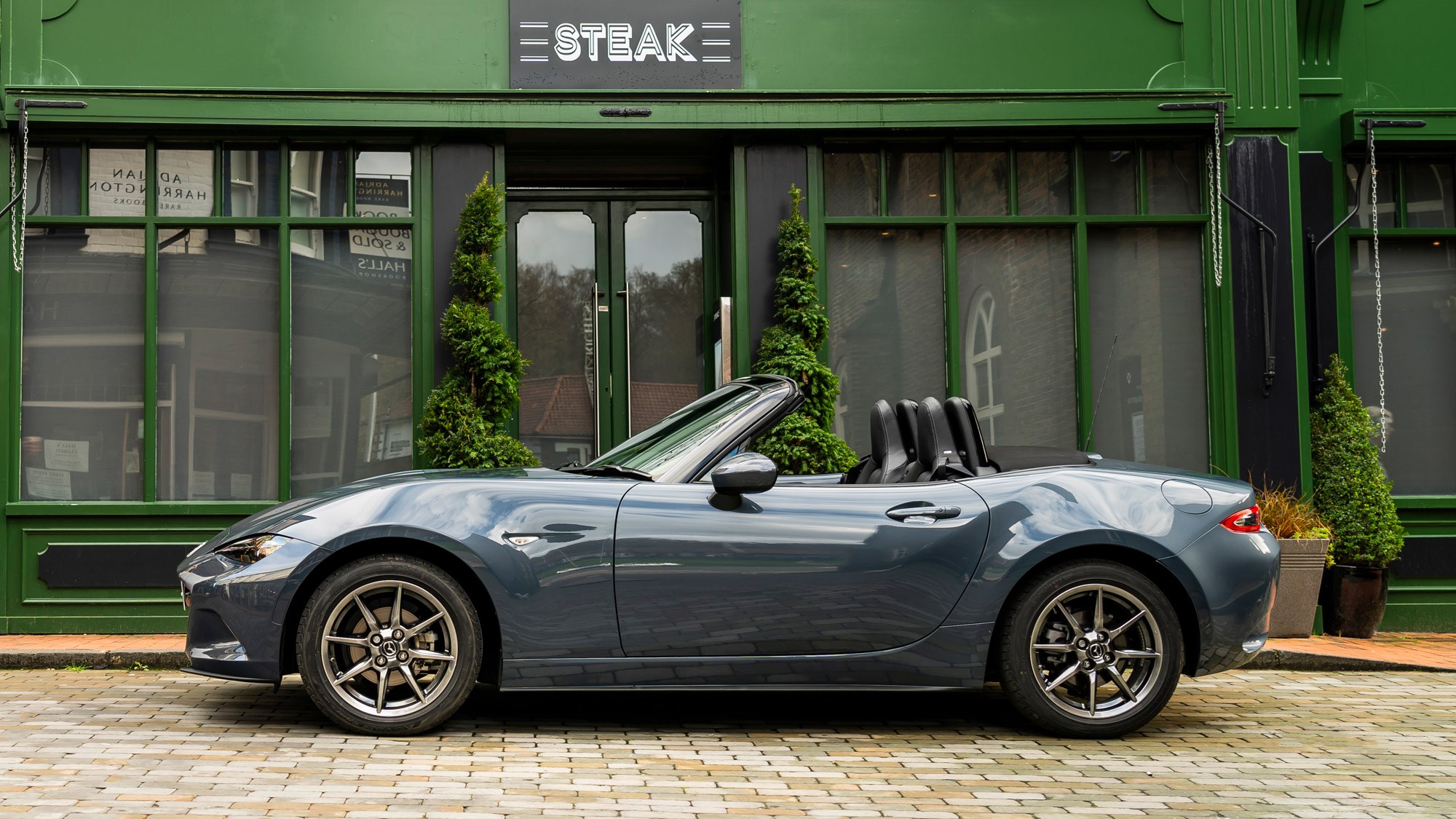
Finally, Sport Tech GT comes with gunmental alloys, returns to black door mirrors and features Stone Napper leather seats in place of perforated black.
Top spec will set you back just over £30k, while the SE-L is currently still under £25,000 – in modern fun-car terms, the MX-5 remains a proper bargain. Mazda isn’t shy about offering attractive finance packages, either.
Sounds good – anything you don’t like?
Mazda UK is still restricting the available options – which is only really an issue because it means the excellent Recaro seats are only ever fitted to special editions.
This is a shame, because the extra lateral support these provide genuinely make a difference to the driving experience. When cornering hard in the standard seats we kept banging our knees on a protruding hard plastic section of the door card.
The 2.0-litre MX-5 remains the pick of the range then?
The 2.0-litre has always been the bigger seller, and the higher-revving version offers the best of both worlds, combining way more power with its superior torque and the sparkling revvy character of the 1.5. The firmer suspension that comes as standard with the larger engine is a reasonable reason to defer, however, and the smaller motor is still a lot of fun.
Basically, it’s hard to go wrong with an MX-5, whatever flavour you choose.
